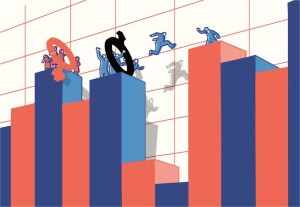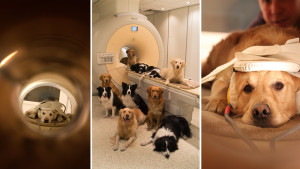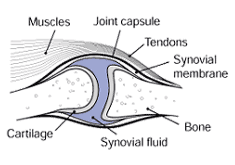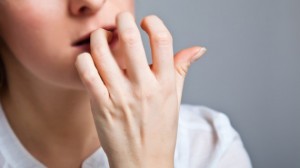We’ve been talking quite a bit about risk-taking in class, and I find it very intriguing. How we don’t consciously think about the array of things that could happen to us in a day. How the decisions we make could easily create either more or less risk. How a situation could change or a result could be altered in an instant because of something we may or may not have done. How me typing at this very moment is a risk itself. As you can tell, I’ve been thinking about this a lot, including the relationship it has with people. One of the more fascinating thoughts that crossed my mind is who is more inclined to take risks? If you are guessing that this post is yet another battle of the sexes blog, you would be absolutely correct. So without further ado, who is more likely to take risks: men or women?
Well, I’ll tell you up-front right now. The answer is, by an overwhelming amount, men.
No matter what article I clicked on involving risk-taking behaviors between men and women, they all said the same thing. Men are the risk takers of the two, and even though this probably didn’t come as too much of a surprise, some people still might be skeptical. Well, by all means, you don’t have to take my word for it. In a meta-analysis, three authors–Byrnes, Miller, and Schafer–examined over 150 studies on gender differences in risk taking. While conducting this study, they took into account “respect to to type of task, task content, and five age levels. The “results showed that the average effects for 14 out of 16 types of risk taking were significantly larger than 0” and “half of the effects were greater than .20%. “ What all of this indicates is that risk-taking was more prominent in male participants. It is unlikely that the Texas Sharpshooter problem had any effect on this meta-analysis, but from looking at this alone, the File Drawer Problem could have. However, there is a way to rule that out for the most part as well.
That’s by asking why. Why is it that risk-taking behaviors were more dominant in boys than girls? Now, here’s where it gets interesting.
Two separate studies by Case Western Reserve University and one published in a book entitled Psychology of Gender: Fourth Edition found that girls were less likely to take risks because they thought more about the consequences. In the first experimental study, they “used a structured interview and drawings that depicted children showing wary or confident facial expressions when engaged in injury-risk play activities.” The girls associated 80% of the play activities they were shown with more wariness than confidence. The boys, on the other hand, did not show more confidence, but just less wariness than the girls. As for the book’s explanation, when girls were observed, they were more inclined to think in a thought-out manner while the boys were more “act now, think later.” This relates back to an idea of perception, in the sense that “girls perceive situations as riskier than boys.”
Another possible explanation in terms of boys vs. girls and risk taking is the idea that
stereotypes and self-image play a role. Once again, Psychology of Gender: Fourth Edition made a claim about male’s and their self-perception. It used the example, when males play sports and get hurt, they play through the pain because it is a sign of “toughness and physical  strength” while admitting pain is “weak behavior that undermines masculinity.” In order to back this up, a study by Booth and Nolen, concluded a similar idea. Their controlled experimental design consisted of male and female subjects who “had an opportunity to choose a risky outcome.” However, these subjects were either in all-male, all-female, or co-ed groups. Results showed that the females were more inclined to participate in risky behavior when they were in an all-female group, while men stayed consistent no matter what group they were in. This caused them to then conclude that women and men may choose their a risky outcome based on “innate preferences or because pressure to conform to gender-stereotypes encourages girls and boys to modify their innate preferences.”
strength” while admitting pain is “weak behavior that undermines masculinity.” In order to back this up, a study by Booth and Nolen, concluded a similar idea. Their controlled experimental design consisted of male and female subjects who “had an opportunity to choose a risky outcome.” However, these subjects were either in all-male, all-female, or co-ed groups. Results showed that the females were more inclined to participate in risky behavior when they were in an all-female group, while men stayed consistent no matter what group they were in. This caused them to then conclude that women and men may choose their a risky outcome based on “innate preferences or because pressure to conform to gender-stereotypes encourages girls and boys to modify their innate preferences.”
The next theory, is one that you may have heard of before in terms of risk, and that is Darwinian instinct or “survival of the fittest.” This idea of risk being more innate in men than women is supported in a study by the University of California, San Diego, another by Geoff Trickey, and a third by Richard Ronay and William von Hippel. Since all three of these studies go into intense detail, I’ll try and keep it short. All three simply said, that in order for men–in their primal state–to attract women, they would have to take risks and prove their masculinity or else they wouldn’t be able to gain companionship and reproduce. On the other hand, women were less likely to take risks because they were more concerned with calculating it in order to keep her children safe and protected. In other words, just like the common theme throughout history, men needed to take risks in order to lead and provide while women had to calculate them for the safety of her babies.
A final explanation in determining risk has to do with a male’s and female’s relationship to stress, and how they handle it. One particular observational study by Mara Mather and Nichole R. Lighthall, compiled data on stress and all of its possible effects, biology, and gender differences. It wound up concluding that “male risk-taking tends to increase under stress, while female risk taking tends to decrease under stress.” This was due to cognition and the gender differences in brain activity. Under stress, women were able to compute risk and prepare for action while men were more likely to act rashly and without thought.
Now, I know you may be thinking, “okay, but why does all of this matter?” Well, the take home message truly is whatever you want it to be. Men, should you think things through a little more? Maybe. If you find yourself more prone to accidents then you may want to evaluate your decisions before you make them. Ladies, should you walk around thinking nothing bad is going to happen to you? Probably not. Just because these results show that men are more inclined to  take risks, does not mean they do 100% of the time. As I stated at the beginning, risk is everywhere. A woman can increase her chances of risk just as much as a man can decrease his chances. There are still many variables and factors that contribute to the risk of each individual’s personality and decisions. However, that does not mean that you shouldn’t stop and think about risks that could have terrible consequences. Male or female, bad things happen, and if you can take precautions to help prevent some of those things, you’ll probably live a longer and happier life.
take risks, does not mean they do 100% of the time. As I stated at the beginning, risk is everywhere. A woman can increase her chances of risk just as much as a man can decrease his chances. There are still many variables and factors that contribute to the risk of each individual’s personality and decisions. However, that does not mean that you shouldn’t stop and think about risks that could have terrible consequences. Male or female, bad things happen, and if you can take precautions to help prevent some of those things, you’ll probably live a longer and happier life.



 spares it from having to “tear and grind” the tiny crustaceans, bivalves, and worms it calls prey
spares it from having to “tear and grind” the tiny crustaceans, bivalves, and worms it calls prey

 much emphasis the media puts on it.
much emphasis the media puts on it.
















